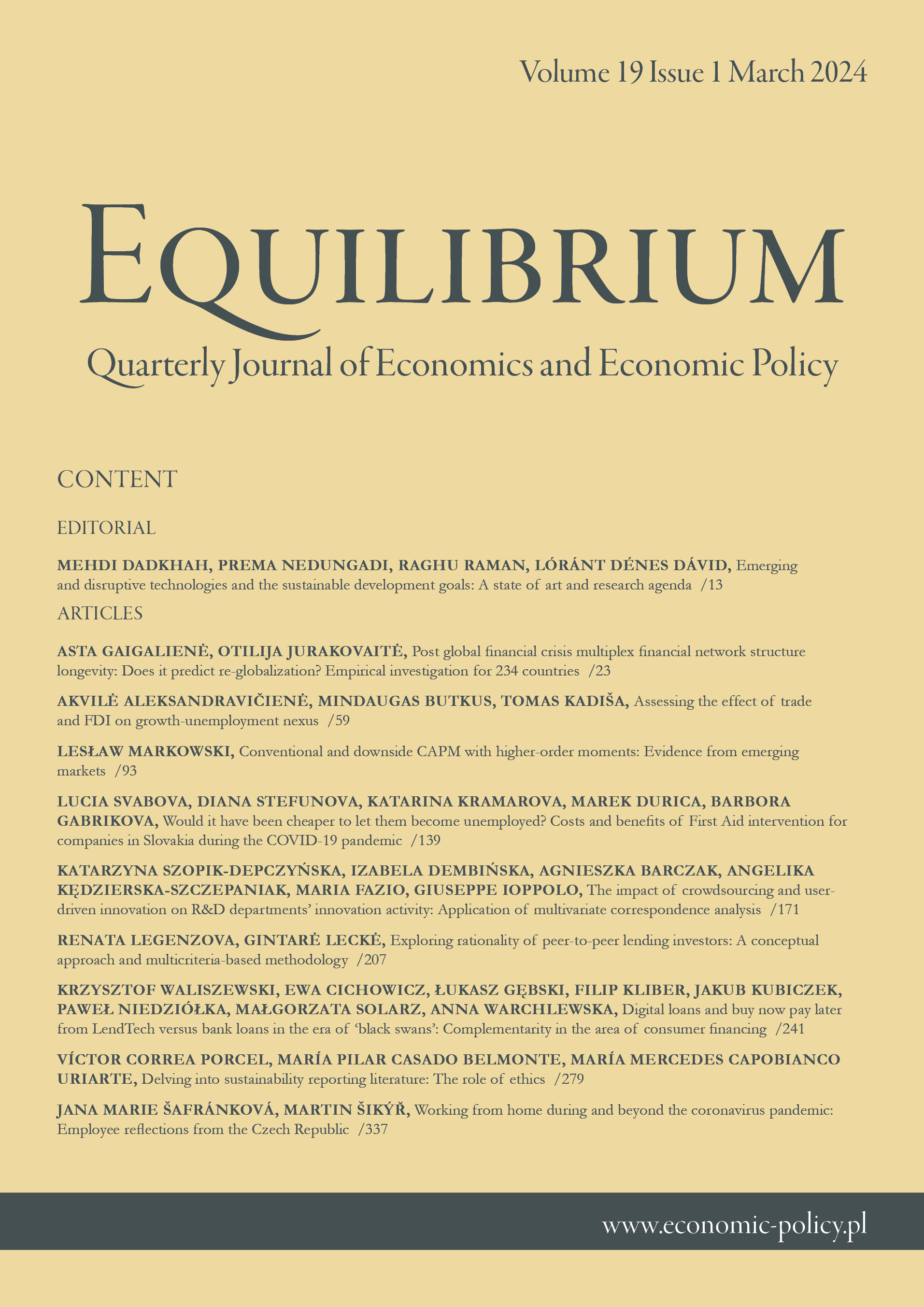The impact of crowdsourcing and user-driven innovation on R&D departments’ innovation activity: Application of multivariate correspondence analysis
The impact of crowdsourcing and user-driven innovation on R&D departments’ innovation activity: Application of multivariate correspondence analysis
Author(s): Katarzyna Szopik-Depczyńska, Izabela Dembińska, Agnieszka Barczak, Angelika Kędzierska-Szczepaniak, Maria Fazio, Giuseppe IoppoloSubject(s): Business Economy / Management, ICT Information and Communications Technologies
Published by: Instytut Badań Gospodarczych
Keywords: crowdsourcing; innovation; user-driven innovation; research and development (R&D); marketing orientation; customer purchase behavior; multivariate correspondence;
Summary/Abstract: Research background: In enterprise practices, innovation management is taking on more and more open forms. New, creative sources of inspiration are being sought. More and more companies are opening up to cooperation with external people or entities, thus entering a path of open innovation and crowdsourcing. This development is facilitated by increasingly large numbers of online and virtual communities. The idea is to use the potential of the crowd — collective intelligence and creativity. As the strategy is still developing, knowledge in this area is limited. There is a paucity of research on the impact of crowdsourcing on R&D departments and their innovative activities.Purpose of the article: The study aims to determine whether the use of customer support in the form of crowdsourcing affects the innovative activities of R&D departments that imple- ment user-driven innovation (UDI).Methods: An original questionnaire was used for the study. Fifty-seven R&D departments in Poland participated in the research. A correspondence analysis, performed on the basis of the Burt matrix, was applied for the analysis. The authors also used Cramer's V correlation coeffi- cients. Examination of the acquired correlation coefficients reveals the existence of four dis- tinct categories of enterprises regarding the usage of crowdsourcing and implementation of product innovations, completed R&D projects, employment in R&D departments, and per- centage of revenue allocating in R&D works.Findings & value added: Research has shown that R&D departments positively evaluate the effects of using UDI in market research analyses of customer purchasing behavior. It helps to create or improve products or services offered on the market, especially in the field of custom- ization, using the information from national research and development units at the same time. Their purpose is mainly to increase the product range. The findings can help academics and practitioners improve the body of knowledge about the determinants of innovation activity, especially concerning relationships with customers and user-driven innovation practices.
Journal: Equilibrium. Quarterly Journal of Economics and Economic Policy
- Issue Year: 19/2024
- Issue No: 1
- Page Range: 171-206
- Page Count: 26
- Language: English

